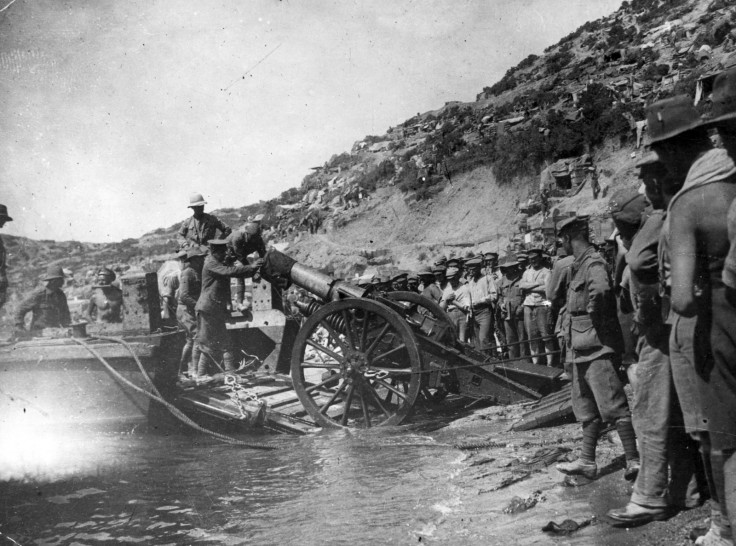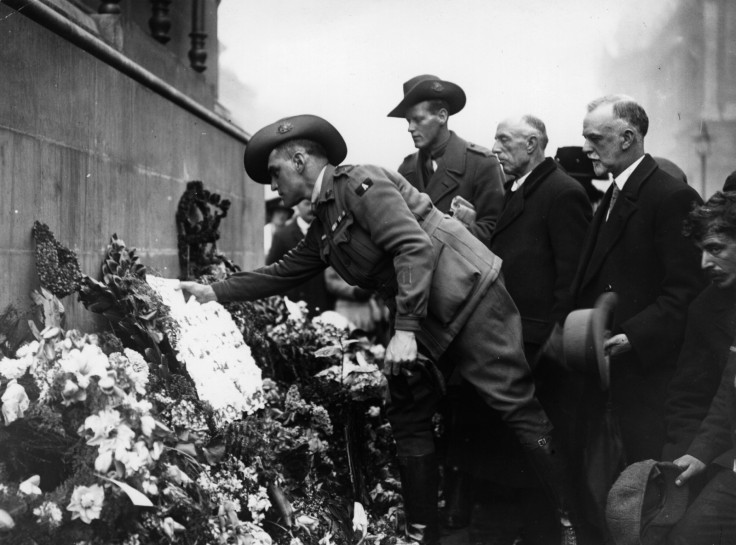Anzac Day 2015: History behind remembrance of the Gallipoli Campaign

The Battle of Gallipoli was one of the Allies' greatest disasters in the First World War. Carried out between 25 April 1915 and 9 January 1916, Winston Churchill's plan was to create a new war front that the Ottomans couldn't cope with – and therefore, end the war early.
By the spring of 1915, combat on the Western Front had begun to stagnate behind a wall of opposing enemy trenches that stretched from the English Channel to the Swiss border. The Gallipoli peninsula, which formed the northern bank of the Dardanelles Strait, would be the route to success – opening a sea lane to the Russians through the Black Sea, providing a base for an attack on the Central Powers.
The campaign was poorly planned and badly executed. By the time the campaign had ended, more than 130,000 men had died; at least 87,000 Ottoman soldiers and 44,000 Allied soldiers, including more than 8,700 Australians. Among the dead were 2,779 New Zealanders – a fifth of all those who landed on the peninsula. The soldiers in the Australian and New Zealand Army Corps quickly became known as the Anzacs.

"Anzac legend"
When war broke out in 1914, Australia had been a federated nation for 13 years. Automatically placed on the side of the Commonwealth when Britain declared war, Australian and New Zealand soldiers formed part of the expedition that set out to capture the Gallipoli peninsula. Yet when the forces landed, they were met with fierce resistance from the Ottoman defenders. The campaign continued for eight months until the Allied forces were evacuated.
Anzac Day, to commemorate those who died during the Gallipoli campaign, was first held on 25 April 1916 with a variety of ceremonies and services in Australia and marches across London and Sydney.
During the 1920s, Anzac Day was established as a national day of commemoration for the 60,000 Australians who perished during the war. Every Australian state observed some form of public holiday on Anzac Day in 1927 and by the 1930s, memorial services, marches and vigils were a part of the day.

Second World War
A million Australians, men and women, served in the Second World War, with around half serving overseas in campaigns against Germany, Italy, the Mediterranean and North Africa. The Australian mainland also came under attack for the first time, with Japanese air strikes on north-western towns and submarines attacking Sydney Harbour.
During World War Two, Anzac Day served to commemorate the casualties, broadening the meaning of the day to include all Australians killed in military operations. In New Zealand, Anzac Day saw a surge in popularity post-WW2, but it proved to be short-lived – with most New Zealanders becoming indifferent by the 1950s.
This was, in part, down to a prohibition by many local authorities of sports events and other entertainment on the day, until the ban was lifted in 1966. Yet since a lull in Anzac Day interest following Australia's involvement in the Vietnam War, the date has seen more involvement from younger Australians and New Zealanders.
© Copyright IBTimes 2024. All rights reserved.






















